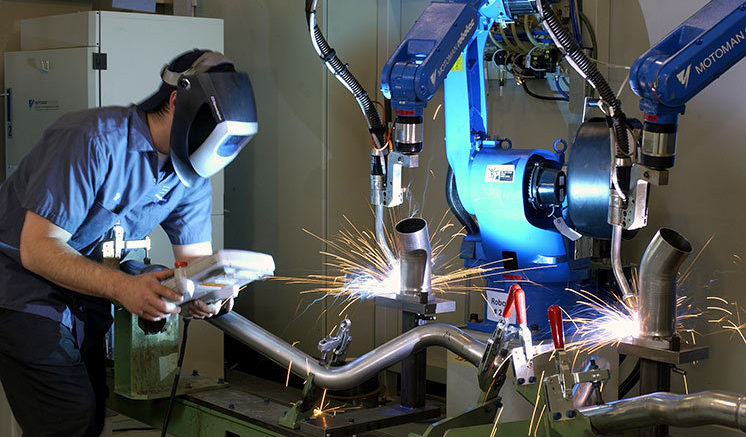Contributed by Mark Degraffenreid,
Greenville Technical College
The U.S. is the world’s largest manufacturing economy and in South Carolina, manufacturing helps to drive the economy, with $28.90 billion in manufactured goods exported in 2014. Manufacturing in Greenville County is an economic powerhouse, first in gross regional product, first in total payroll for all industries, and third in number of individuals employed in the private sector.
The result of that strength is opportunity for those with the right skills. Within the manufacturing environment, one of the skill sets required is welding. The welding field employs 5,990 people in the state who earn an average annual salary of $38,440. Opportunities are expected to increase, according to the Bureau of Labor Statistics, with 4 percent growth expected in the field by 2024.
Increasingly, some of the basic welding tasks in manufacturing are handled by robots. So those who can supervise the robots are positioned for excellent salaries and opportunities.
A recent Associated Press article explored the premise that Mexico and China are stealing millions of manufacturing jobs from the United States. Actually, the article explained, the jobs are being assumed by automation, with robots a key factor in reducing factories’ dependence on human labor.
Robotic welders cost less today than they did in years past, contributing to their widespread use in manufacturing. Spot welders were priced at $182,000 in 2005, according to the Associated Press article, and are expected to decrease to $103,000 by 2025. As costs decrease, capabilities are improving.
The advantages of robotic welding include consistency and increased production. Human welders make mistakes, their work day is limited in hours with breaks needed, and they take occasional vacations. Robots are more consistent than the human hand, and they work without time limitations.
What do these trends mean for welding education? The best education is focused on robotic applications specifically designed for the manufacturing environment. Companies need people who have a combination of welding skills and knowledge of robotics so that they can program the robot to perform its tasks and make repairs when needed. Having knowledge in one area – welding or robotics — is good, but having knowledge of both is better.
Changing requirements for welders in the manufacturing environment recently led Greenville Technical College to redesign basic welding education. The Welding Fundamentals Certificate has been replaced with a Robotic Welding Fundamentals Certificate. The three semester certificate features two robotic welding classes along with courses in the fundamentals of basic welding, pipe fitting, and print reading. These changes, expected to better meet the needs of employers, should also position graduates for the higher salaries that come with broad knowledge of welding and robotics.


Be the first to comment on "Tech school focuses on innovative instruction to meet state manufacturing needs"